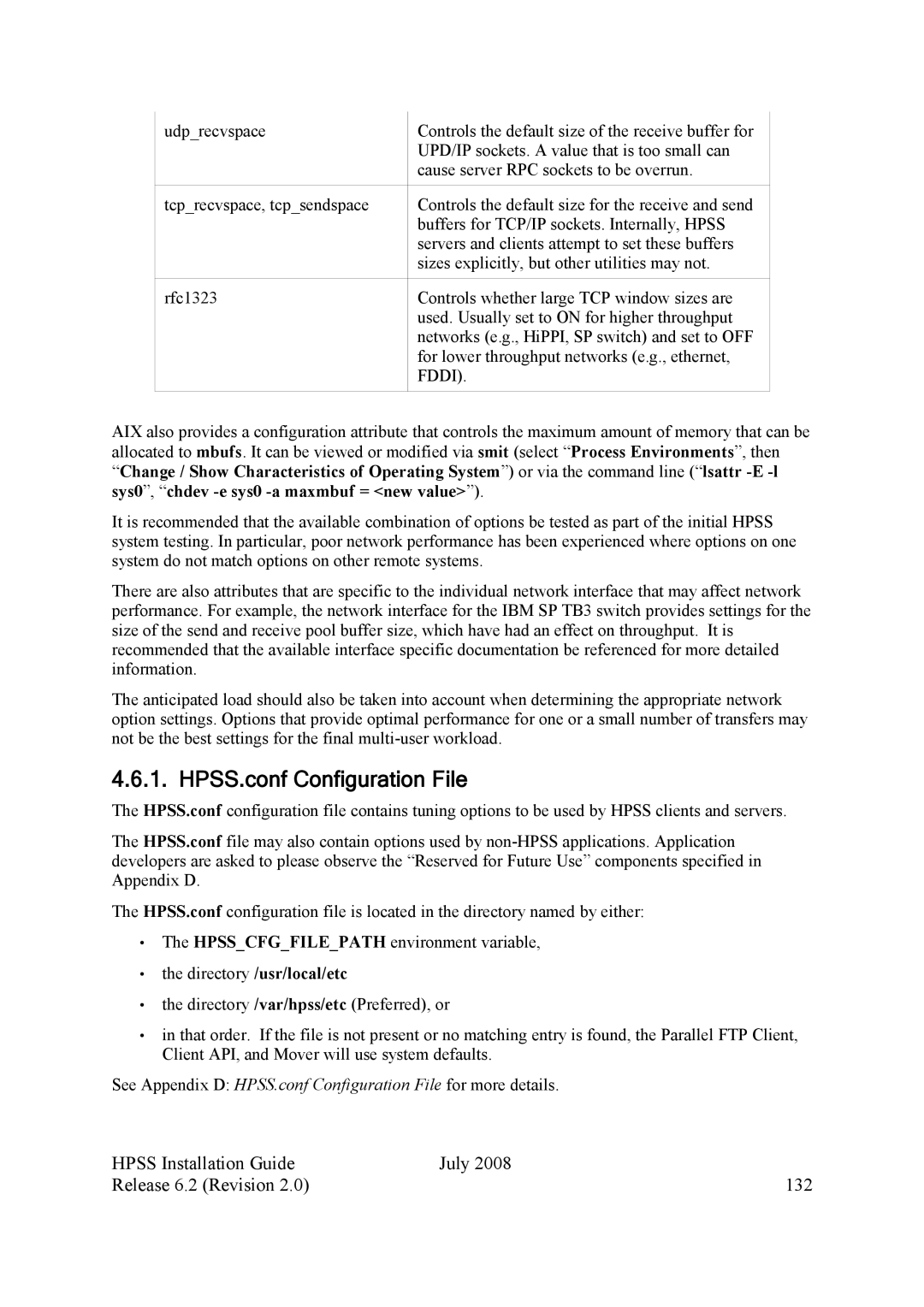udp_recvspace | Controls the default size of the receive buffer for |
| UPD/IP sockets. A value that is too small can |
| cause server RPC sockets to be overrun. |
|
|
tcp_recvspace, tcp_sendspace | Controls the default size for the receive and send |
| buffers for TCP/IP sockets. Internally, HPSS |
| servers and clients attempt to set these buffers |
| sizes explicitly, but other utilities may not. |
|
|
rfc1323 | Controls whether large TCP window sizes are |
| used. Usually set to ON for higher throughput |
| networks (e.g., HiPPI, SP switch) and set to OFF |
| for lower throughput networks (e.g., ethernet, |
| FDDI). |
|
|
AIX also provides a configuration attribute that controls the maximum amount of memory that can be allocated to mbufs. It can be viewed or modified via smit (select “Process Environments”, then “Change / Show Characteristics of Operating System”) or via the command line (“lsattr
It is recommended that the available combination of options be tested as part of the initial HPSS system testing. In particular, poor network performance has been experienced where options on one system do not match options on other remote systems.
There are also attributes that are specific to the individual network interface that may affect network performance. For example, the network interface for the IBM SP TB3 switch provides settings for the size of the send and receive pool buffer size, which have had an effect on throughput. It is recommended that the available interface specific documentation be referenced for more detailed information.
The anticipated load should also be taken into account when determining the appropriate network option settings. Options that provide optimal performance for one or a small number of transfers may not be the best settings for the final
4.6.1. HPSS.conf Configuration File
The HPSS.conf configuration file contains tuning options to be used by HPSS clients and servers.
The HPSS.conf file may also contain options used by
The HPSS.conf configuration file is located in the directory named by either:
•The HPSS_CFG_FILE_PATH environment variable,
•the directory /usr/local/etc
•the directory /var/hpss/etc (Preferred), or
•in that order. If the file is not present or no matching entry is found, the Parallel FTP Client, Client API, and Mover will use system defaults.
See Appendix D: HPSS.conf Configuration File for more details.
HPSS Installation Guide | July 2008 |
Release 6.2 (Revision 2.0) | 132 |
